Blankets, compared to quilts, are often thinner but soft or warm. With a variety of sizes, blankets find use in more scenarios than quilts. Traditionally, blankets referred to pure wool blankets, but with advancements in technology, types of blanket fabrics have become more diverse.
Different materials of blankets have distinct characteristics. If you’re considering buying blankets, this article can help you better understand the various blanket material types, allowing you to determine your needs.
Considerations to Choose Blanket Materials
1. Season
Different seasons call for different blanket materials. Cotton blankets are breathable and lightweight, making them suitable for summer, while blankets with animal fibers are ideal for fall and winter.
2. User Group
Certain groups, like babies, may have special requirements for blanket materials. For sensitive baby skin, materials such as cashmere, coral fleece, mink fur, yarn, and pure cotton are commonly used due to their softness and low allergenicity.
3. Cost
Material costs vary. Natural fibers like wool and cotton tend to be more expensive, while synthetic fibers are more affordable. The cost is also influenced by material density, processing difficulty, and other factors.
Four Animal Fiber Fabrics for Blankets
1. Wool
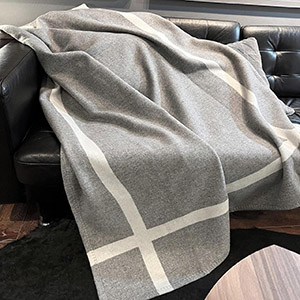
Wool blanket fabric is a material with a long history, known for excellent warmth, softness, and elasticity. It has good water absorption, doesn’t generate static electricity, and is generally safe for skin.
2. Cashmere

Cashmere, derived from goats, is often referred to as “soft gold.” It’s the softest and warmest blanket material, and a bit pricey, so cashmere blankets often blend with wool or other fibers for enhanced properties and affordability.
3. Mink Fur
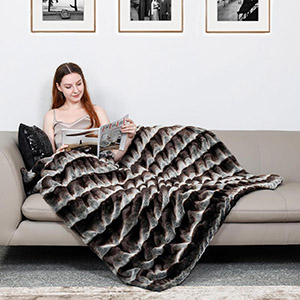
Minky fleece fabric, a luxurious material, provides a soft and plush texture.It typically has shorter fibers and is often blended with synthetic fibers for practical blanket production.
4. Rabbit Fur
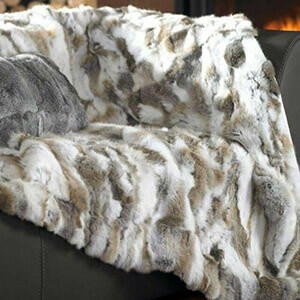
Rabbit Fur, light and fine, provides good warmth. Rabbit fur blankets are generally more affordable than wool blankets, but due to lower strength and tendency to shed, they are often blended with other fibers for increased durability.
5. Feathers

Down blankets utilize bird feathers for insulation, with outer layers made of thin materials like polyester or cotton. While not as warm as wool or rabbit hair, down blankets are lightweight and suitable for carrying during outdoor activities. Its price is relatively expensive.
Three Plantfiber Fabrics for Blankets
1. Cotton
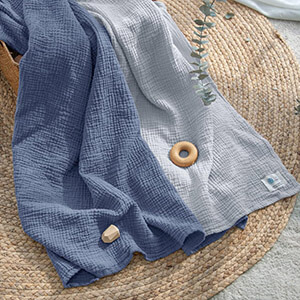
Cotton, a natural and breathable material, boasts good absorbency. Pure cotton blankets may wrinkle easily, so blends with other fibers like polyester are common for improved wrinkle resistance or enhanced breathability.The muslin fabric swaddle blankets, which are very popular on the market now, are mainly made of cotton.
2. Flax
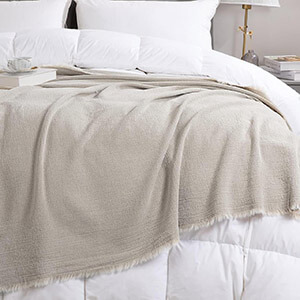
Flax, a historic textile, is strong, softer and more breathable than cotton. Flax blankets are often blended with cotton to improve softness. It’s one of the best materials for throws blankets or summer blankets.
3. Bamboo Fiber
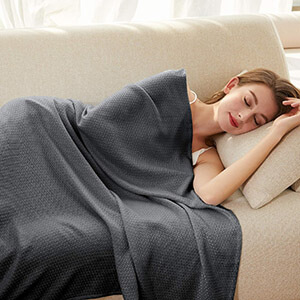
Bamboo fiber, an eco-friendly option, is renowned for its softness. Bamboo fiber blankets are lightweight, breathable, and suitable for spring, summer, and autumn. They tend to be slightly pricier than cotton blankets.
Four Synthetic Fiber Fabrics for Blankets
1. Polyester Fiber
Polyester fiber, the most common synthetic fiber in the market, is known for its strength, durability and strong wrinkle resistance. It is also a fabric that is easy to make patterns on. Below are some popular fleece blanket materials with polyester as the main component.
Coral Fleece

Coral fleece is an affordable fleece fabric, crafted from polyester fibers to create a coral-like textile. The fabric of coral fleece blankets is delicate, offering a soft, non-pilling, and colorfast touch, providing good warmth.
Flannel Fleece
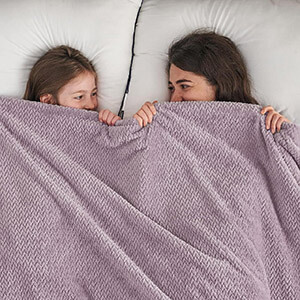
Modern flannel fleece fabric are often polyester-based. Compared to coral fleece blankets, flannel blankets have shorter, denser fibers, providing a softer feel and better warmth. However, they may lack breathability and are not as effective at absorbing sweat.
Baby Fleece
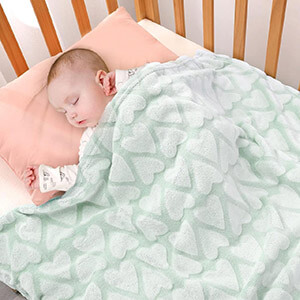
Baby fleece is predominantly composed of polyester fibers, sometimes may be blended with other materials like wool and cotton.It offers a soft and skin-friendly fabric suitable for crafting children’s clothing. It excels in moisture absorption, keeping the skin dry. However, baby fleece blankets may not match the warmth of those made from coral fleece and flannel.
Berber Fleece

Also known as Sherpa fleece fabric, Berber fleece doesn’t come from sheep but is manufactured using synthetic fibers like polyester and acrylic, resembling the warmth of real lambswool. Often used in winter coats and jackets, Berber fleece blankets have a slightly firm feel but excellent warmth and strong water absorption.
Crystal Velvet
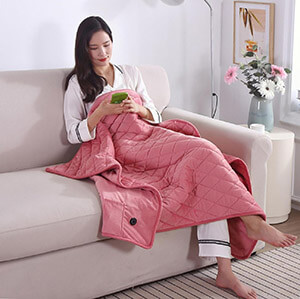
The water absorption capacity of crystal velvet is far greater than that of pure cotton.It is also wear-resistant, mildew-resistant and has the effect of warmth. But the texture is harder than coral velvet, not very skin-friendly.
Polar Fleece
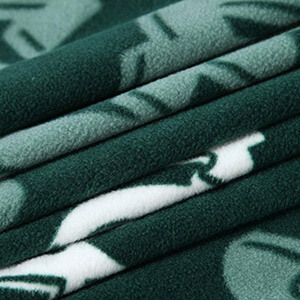
Polar fleece is typically composed of 100% polyester fibers, which is suitable to be a printed fleece fabric. Its fluffy and dense pile, along with a soft touch and resistance to pilling, makes it a popular winter fleece material for no-sew blankets. When creating blankets, long-fiber sherpa fleece is commonly preferred.
2. Acrylic Fiber
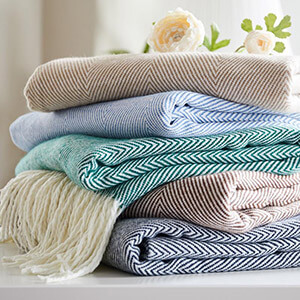
Acrylic fiber, mimicking wool in performance, replicates the warmth and softness of wool in blankets. It has good elasticity, a fluffy and curly texture. Milk fleece fabric is a blend of acrylic fiber and milk protein fiber. Milk fabric blankets provide warmth and breathability, but they are relatively expensive. Many low-cost imitations on the market are made from polyester fiber.
3. Microfiber
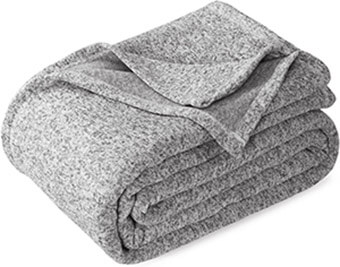
Microfibre fleece fabric is very comfortable to the touch. Sports products such as sweatshirt material blankets are often made of microfiber because of its sweat-absorbent and breathable properties.
4. Viscose Fiber
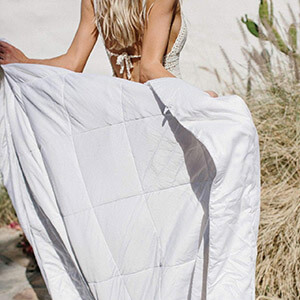
Viscose fiber, a man-made fiber, creates smooth and breathable blankets. However, it may be less elastic and durable. When combined with acrylic fiber, the material exhibits a wool-like texture and loftiness, making it suitable for creating plush blankets.
Where to Get Blanket Fabric
The above are some of best popular blanket fabrics. If you want to DIY your own blanket at home and buy fabrics on sale, you can go to Amazon, Alibaba and other websites to search for price comparisons. If you want to buy blanket materials in bulk, importing from China is a good choice. China’s blanket exports account for 60% of the world’s total, which blankets are low-priced, high-quality, and comprehensive in variety. You can definitely find a manufacturer in China that meets your needs.
Jingsourcing can help you choose the blanket manufacturer that suits you in China. We are a leading sourcing company in China and have helped lots of clients source various products from China. We can follow up on the whole importing process and give you guidance step by step . Any help for sourcing from China, just feel free to CONTACT US.

Leave A Comment